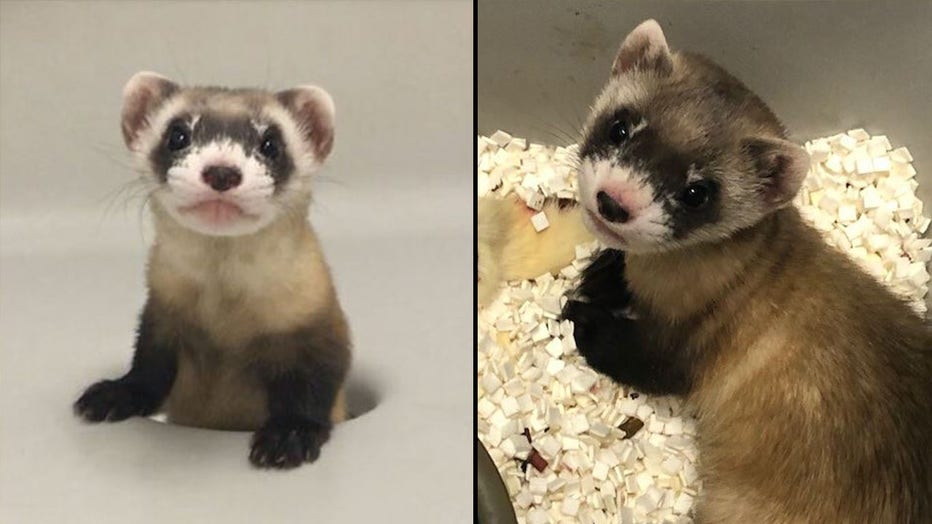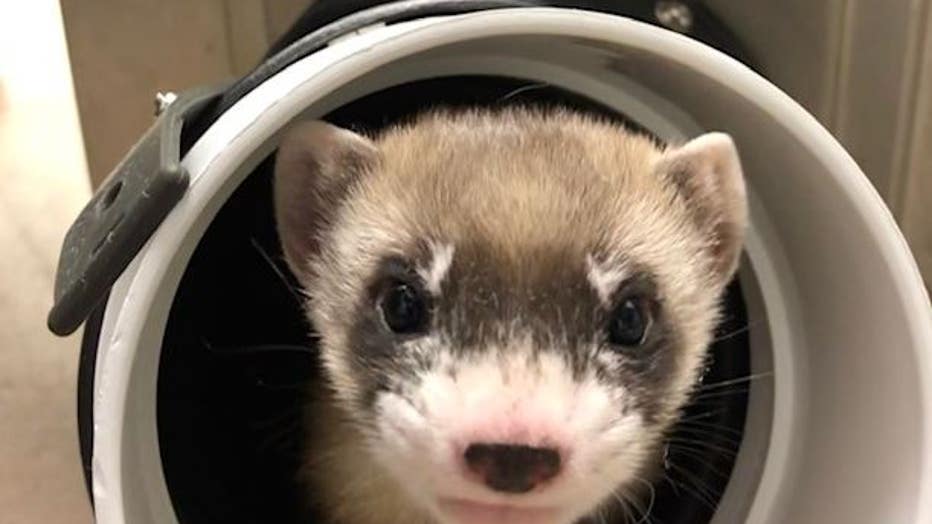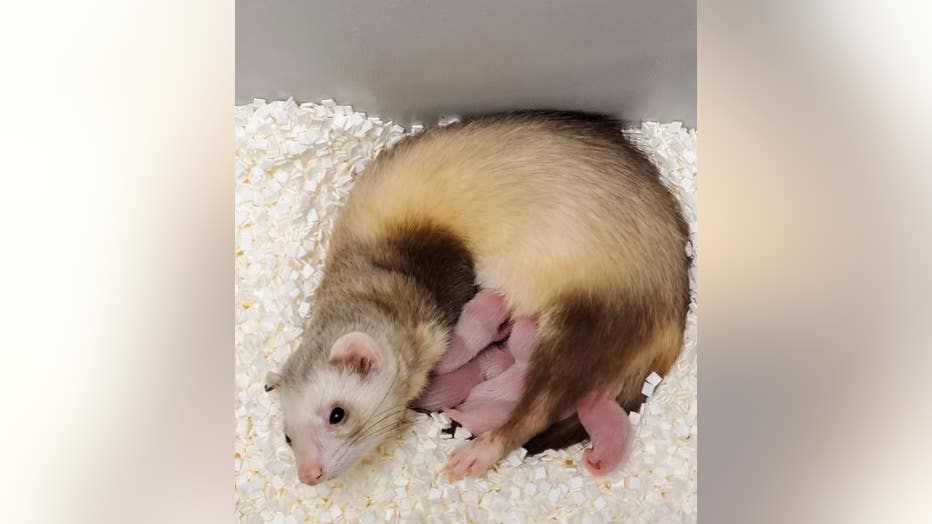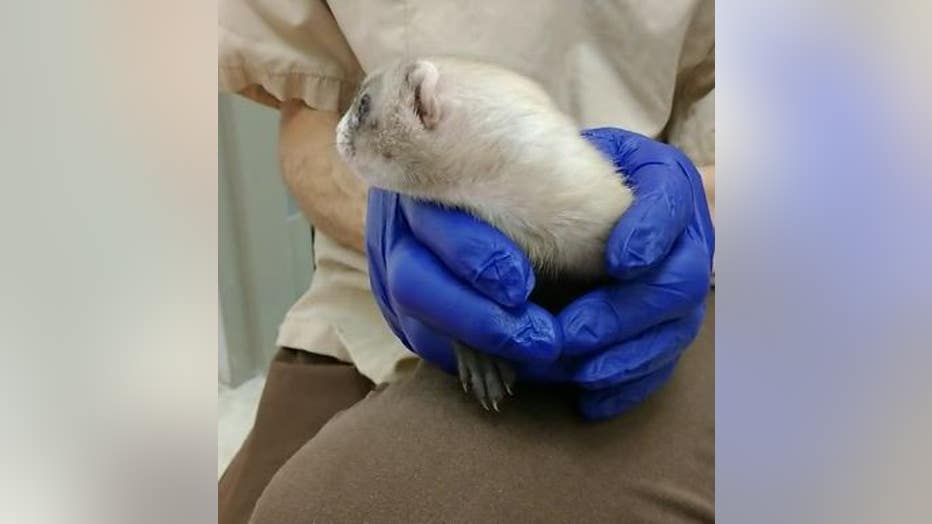An endangered species in the U.S. has been cloned for the first time
Scientists announced the first-ever clone of an endangered species in the U.S., a black-footed ferret.
The U.S. Fish and Wildlife Service recently announced Elizabeth Ann was born Dec. 10, 2020 thanks to cells frozen from another black-footed ferret that lived more than 30 years ago. Her birth is giving scientists new hope about preserving endangered species.

Elizabeth Ann, the first cloned black-footed ferret and first-ever cloned U.S. endangered species. Credit: USFWS National Black-footed Ferret Conservation Center
Black-footed ferrets are one of North America’s rarest land mammals. They’re native to America’s Great Plains and face a variety of threats, including habitat loss and diseases such as the sylvatic plague, the agency said. Their primary food source in the wild is prairie dogs.
Once thought to be extinct, black-footed ferrets were brought back from nearly vanishing forever after a Wyoming rancher discovered a small population on his land in 1981. Ferrets from this population were captured to begin a captive breeding program to recover the species.
Elizabeth Ann comes courtesy of one of those ferrets, Willa.

Elizabeth Ann, the first cloned black-footed ferret and first-ever cloned U.S. endangered species, at 50-days old.Credit: USFWS National Black-footed Ferret Conservation Center
In 1988, The Wyoming Game & Fish Department preserved Willa’s genes and sent tissue samples from her to San Diego Zoo Global’s Frozen Zoo. The Frozen Zoo established a cell culture and cared for it ever since, making Elizabeth Ann’s scientific birth possible.
"We are delighted that we have been able to cryobank and, years later, provide viable cell cultures for this groundbreaking project," said Oliver Ryder, Director of Conservation Genetics, San Diego Zoo Global.
The birth of Elizabeth Ann is especially encouraging to scientists because it increases her species’ genetic diversity, boosting its conservation efforts.

Elizabeth Ann, the first cloned black-footed ferret and first-ever cloned U.S. endangered species, with her domestic ferret siblings and surrogate mother.Credit: USFWS National Black-footed Ferret Conservation Center
Today, all remaining black-footed ferrets come from seven individuals, which means their genetic makeup is similar so they’re more susceptible to diseases and abnormalities.
But scientists have found that Willa’s DNA is three times more unique than the living population’s - which means Elizabeth Ann’s DNA is more unique, too.
Therefore, if Elizabeth Ann successfully mates and reproduces, she could provide unique genetic diversity to the species.
"We’ve come a long way since 2013 when we began the funding, permitting, design and development of this project with the U.S. Fish and Wildlife Service. Genomics revealed the genetic value that Willa could bring to her species," said Ryan Phelan, Revive and Restore Executive Director. Revive and Restore is a partner agency with the U.S. Fish and Wildlife Service.
"But it was a commitment to seeing this species survive that has led to the successful birth of Elizabeth Ann. To see her now thriving ushers in a new era for her species and for conservation-dependent species everywhere. She is a win for biodiversity and for genetic rescue."

Elizabeth Ann, the first cloned black-footed ferret and first-ever cloned U.S. endangered species, is handled by a technician during routine monitoring and observation.Credit: USFWS National Black-footed Ferret Conservation Center
Elizabeth Ann will not be released in the wild. She’s being cared for at the U.S. Fish and Wildlife Service’s Black Footed Ferret Conservation Center in Colorado.

